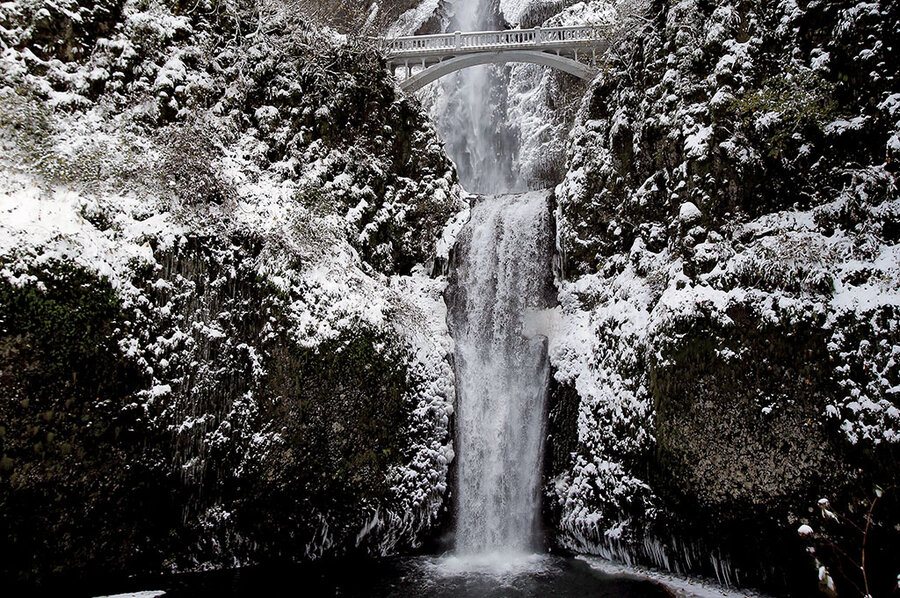What we learned from our winter hike
Loading...
We can always blame our niece. Elizabeth’s the one who suggested we go for a waterfall hike in the gorge in March, when sensible people are still indoors nudging their thermostats.
The Columbia River Gorge hikes all have a lot in common: They’re green, wet, and straight up. The hike Elizabeth suggested, Devil’s Rest, at least seemed to have an end point. Nothing about the name warned us off. Everyone likes rest.
And because the gorge has so much upness in it, you can get a lot of variation in a day hike. You can start at the bottom in September, with the happy, frolicking woodland critters, and emerge a mile up in January, eyes peeled for trampling caribou.
Elizabeth promised that we’d stop when we hit snow. We were only going to gain a half-mile elevation on this hike, but it’s early in the season, so we weren’t in our summer shape, and we warmed up right away.
“Can’t believe people won’t hike in the rain,” we said to each other, too smug.
“Look how beautiful it is! Why don’t people do more winter hiking?”
Excellent question.
The snow comes abruptly when you’re hiking uphill. First you round the bend and see a little starter patch. Then more and more patches appear, until they coalesce into a snowfield with intermittent mudslides.
The weather forecast was for light rain, and sure enough there was a ton of light rain up there. Nearby trees began to disappear. After a few miles the first viewpoint presented itself as a wide spot with a sheer drop-off, beyond which squatted a cloud bank thick enough to break your fall.
It was magnificent, we assume: Somewhere below us stretched the majesty of the mighty Columbia River, churning through the basalt cliffs. Or, possibly, a tropical paradise. No way to know for sure. We stepped away from the edge and kept shlorping uphill through the snow and mud.
Devil’s Rest turned out to be a view-free bunch of boulders in the forest at a point high enough to funnel gusts of sleet in our direction. We zipped up, hunched over our sandwiches, and speculated about the freezing point of mayonnaise.
My husband, Dave, through clenched teeth, sent out something about Elizabeth and me being entirely too gung-ho. I mentioned brightly that the guidebook said there was a different way down, conceivably through Tahiti, and that we should be able to make out trail signs.
We peered through the fog and finally noticed signs – of hypothermia – and went down the way we came, with the mighty Columbia rumbling below and Dave grumbling behind. Periodically the snow, mud, and momentum sent him ricocheting past us down the trail until he was able to stop his slide with a Douglas fir tree.
“I thought,” he said tightly, at one point, peeling bark from his beard, “we were going to stop when we hit snow.”
Elizabeth explained. Usually, when you hit snow, it’s passable for a while, and then it suddenly gets too deep to traverse, and that’s when we were going to turn back. This snow, however, had remained thin, albeit slick.
“So,” Dave said, “what you meant was, we would go until the snow was in fact impassable, and at that point we would not continue passing. We would not, as you say, violate any laws of physics. Is that it?”
“Right,” Elizabeth said. “You OK?” she called down.
He was probably OK. He didn’t say much the rest of the way down. We got to the car and cranked up the heater until we’d knocked the rime off the interior of our cell walls.
“That was great!” Elizabeth chirped when her larynx defrosted. “It’ll be even better next time,” she said, poking Dave, until he seized her by the poking finger.
He had an opinion already thawed out.







